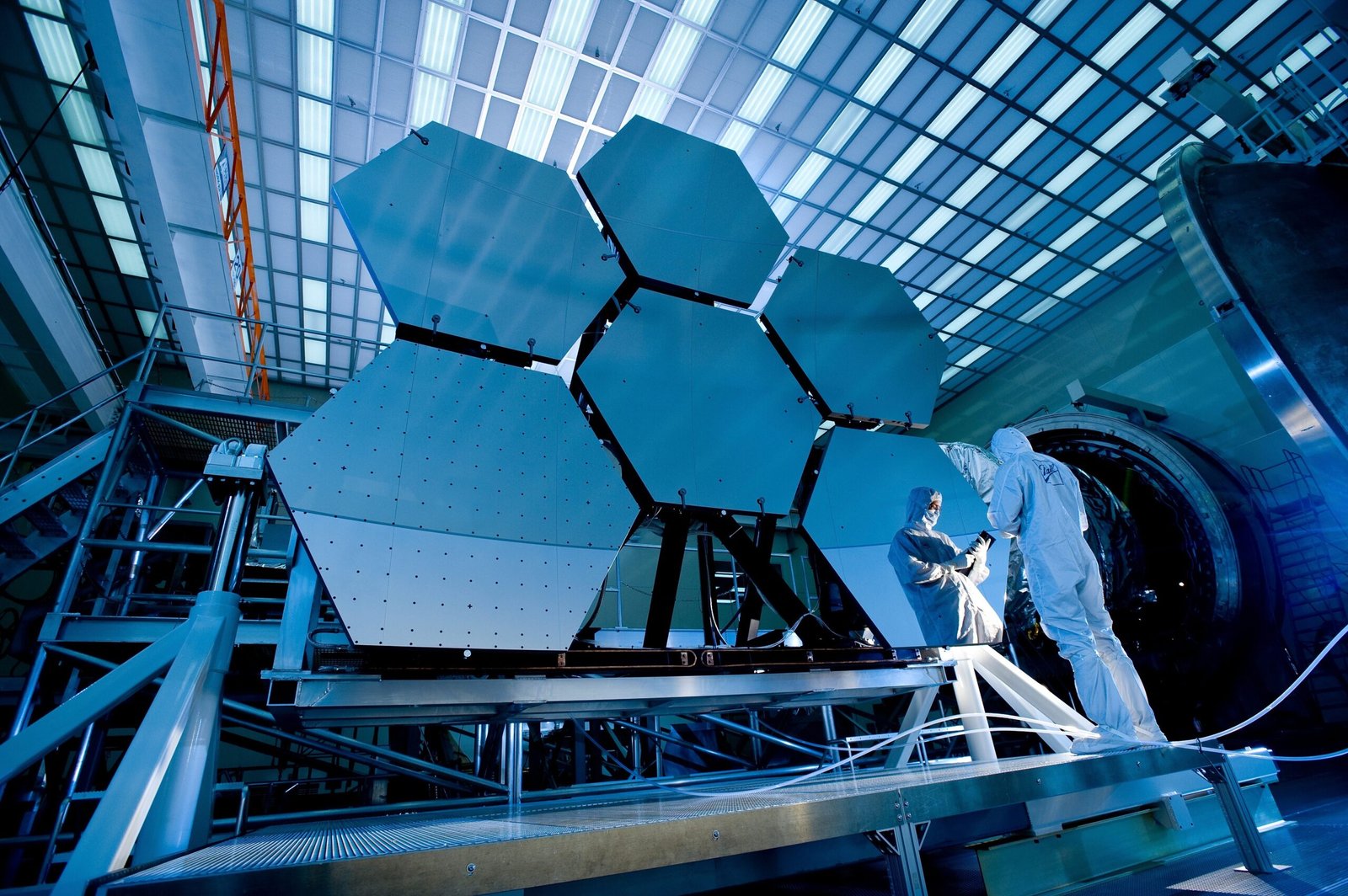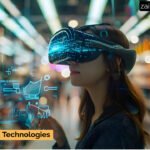The year 2023 is expected to see the release of many new and innovative technologies, including commercial nuclear fusion power, artificial intelligence (AI) everywhere, quantum computing, extended reality (XR), the Internet of Things (IoT), blockchain, gene editing, 3D printing, and brain-computer interfaces (BCIs). These technologies have the potential to revolutionize many industries and improve our lives in many ways.
Here are some of the potential benefits of these technologies:
These are just a few of the potential benefits of the new technologies that are expected to be released in 2023. It is an exciting time to be alive, and we can only imagine the ways in which these technologies will change our world.
- Commercial nuclear fusion power: This is a long-awaited technology that could potentially provide a clean and abundant source of energy. Several companies are working on developing commercial nuclear fusion reactors, and some experts believe that they could be operational within the next few years.
- Artificial intelligence (AI) everywhere: AI is already being used in a wide variety of applications, from self-driving cars to medical diagnosis. In 2023, we can expect to see even more widespread adoption of AI, as it becomes more powerful and affordable.
- Quantum computing: Quantum computing is a new type of computing that is based on the principles of quantum mechanics. It has the potential to solve problems that are intractable for traditional computers. Several companies are developing quantum computers, and some experts believe that they could be commercially available within the next decade.
- Extended reality (XR): XR is a broad term that encompasses virtual reality (VR), augmented reality (AR), and mixed reality (MR). XR is becoming increasingly popular, as it offers new ways to interact with the world. In 2023, we can expect to see more XR applications being developed, such as VR training for surgeons and AR shopping experiences.
- Internet of Things (IoT): The IoT is a network of physical objects that are connected to the Internet. These objects can collect and exchange data, which can be used to improve efficiency, safety, and convenience. In 2023, we can expect to see even more IoT devices being deployed, such as smart home appliances and connected cars.
- Blockchain: Blockchain is a distributed ledger technology that allows for secure and transparent transactions. It is being used in a variety of applications, such as cryptocurrency and supply chain management. In 2023, we can expect to see more blockchain applications being developed, as it becomes more widely adopted.
- Gene editing: Gene editing is a technology that allows scientists to change the DNA of living organisms. This technology has the potential to cure diseases, improve crop yields, and create new organisms. In 2023, we can expect to see more research being done on gene editing, as well as the development of new gene editing tools.
- 3D printing: 3D printing is a technology that allows objects to be created from a digital file. This technology is becoming increasingly popular, as it can be used to create prototypes, custom parts, and even food. In 2023, we can expect to see more 3D printing applications being developed, as the technology becomes more affordable and accessible.
- Brain-computer interfaces: Brain-computer interfaces (BCIs) are devices that allow humans to control computers or other devices with their thoughts. BCIs are still in their early stages of development, but they have the potential to revolutionize the way we interact with technology. In 2023, we can expect to see more research being done on BCIs, as well as the development of new BCI devices.
Commercial Nuclear Fusion Power
Nuclear fusion is the process by which two or more atomic nuclei join together, or “fuse”, to form a single heavier nucleus. This process releases a large amount of energy, which could be used to generate electricity.
Commercial nuclear fusion power is a long-awaited technology that has the potential to provide a clean and abundant source of energy. However, it has been a challenge to achieve fusion reactions that produce more energy than they consume.
In recent years, there has been significant progress in fusion research. Several companies are working on developing commercial fusion reactors, and some experts believe that they could be operational within the next few years.
One of the most promising fusion technologies is called tokamak. A tokamak is a donut-shaped device that uses a strong magnetic field to confine a hot plasma, the state of matter in which atoms are stripped of their electrons.
Another promising fusion technology is called a stellarator. A stellarator is also a donut-shaped device, but it uses a different magnetic field configuration than a tokamak.
The development of commercial nuclear fusion power is still in its early stages, but it is a promising technology with the potential to revolutionize the way we generate energy.
Here are some of the benefits of commercial nuclear fusion power:
- It is a clean source of energy that does not produce greenhouse gases.
- It is a safe source of energy, as there is no risk of meltdown.
- It is a reliable source of energy, as it can be operated 24 hours a day, 7 days a week.
- It is a scalable source of energy, as it can be used to generate large amounts of electricity.
However, there are also some challenges associated with commercial nuclear fusion power:
- It is a complex technology that is difficult to develop and build.
- It is a costly technology, as it requires expensive materials and facilities.
- It is a long-term project, as it will take many years to develop and deploy commercial fusion reactors.
Despite the challenges, the potential benefits of commercial nuclear fusion power make it a worthwhile endeavor. If successful, it could provide a clean, safe, and reliable source of energy for generations to come.
Artificial Intelligence (AI) Everywhere
Artificial intelligence (AI) is already being used in a wide variety of applications, from self-driving cars to medical diagnosis. In 2023, we can expect to see even more widespread adoption of AI, as it becomes more powerful and affordable.
Here are some of the ways that AI is being used today:
- Self-driving cars: AI is being used to develop self-driving cars that can navigate roads and avoid obstacles without human intervention.
- Medical diagnosis: AI is being used to develop diagnostic tools that can help doctors identify diseases more accurately and efficiently.
- Customer service: AI is being used to develop chatbots that can answer customer questions and resolve issues without the need for human intervention.
- Manufacturing: AI is being used to automate manufacturing processes, improve quality control, and optimize production.
- Retail: AI is being used to personalize shopping experiences, recommend products, and optimize inventory management.
- Finance: AI is being used to detect fraud, manage risk, and make investment decisions.
- Cybersecurity: AI is being used to develop security systems that can detect and prevent cyberattacks.
These are just a few of the many ways that AI is being used today. As AI continues to develop, we can expect to see even more widespread adoption of this technology in the years to come.
Here are some of the benefits of AI:
- It can automate tasks that are currently done by humans, freeing up time for humans to focus on more creative and strategic work.
- It can improve the accuracy and efficiency of tasks, such as medical diagnosis and customer service.
- It can help us to make better decisions, such as investment decisions and risk management decisions.
- It can help us to discover new things, such as new drugs and new materials.
However, there are also some challenges associated with AI:
- It can be used to create biased or discriminatory systems.
- It can be used to automate jobs, which could lead to unemployment.
- It could be used to develop autonomous weapons systems.
It is important to be aware of the potential risks and benefits of AI as we develop and deploy this technology. With careful planning and oversight, AI can be a force for good in the world.
Quantum Computing
Quantum computing is a new type of computing that is based on the principles of quantum mechanics. It has the potential to solve problems that are intractable for traditional computers.
Quantum computers use qubits, which are quantum bits of information. Qubits can exist in a superposition of states, which means that they can be both 0 and 1 at the same time. This allows quantum computers to perform calculations that are exponentially faster than traditional computers.
Quantum computing is still in its early stages of development, but it has the potential to revolutionize many industries. Some of the potential applications of quantum computing include:
- Drug discovery: Quantum computers could be used to simulate the behavior of molecules, which could help scientists to develop new drugs.
- Materials science: Quantum computers could be used to design new materials with desired properties.
- Financial modeling: Quantum computers could be used to model financial markets, which could help to reduce risk and improve investment returns.
- Artificial intelligence: Quantum computers could be used to develop new AI algorithms that are more powerful and efficient.
- Cybersecurity: Quantum computers could be used to break current encryption methods, which could pose a security risk.
The development of quantum computing is a rapidly evolving field. It is still too early to say what the full impact of this technology will be, but it has the potential to change the world in many ways.
Extended Reality (XR)
Extended reality (XR) is a broad term that encompasses virtual reality (VR), augmented reality (AR), and mixed reality (MR). XR is becoming increasingly popular, as it offers new ways to interact with the world.
- Virtual reality (VR) is a computer-generated environment that is experienced through a headset. VR can be used to create immersive experiences, such as simulations of flying or driving.
- Augmented reality (AR) is a technology that overlays computer-generated images onto the real world. AR can be used to add information to the real world, such as directions or product information.
- Mixed reality (MR) is a combination of VR and AR. MR can be used to create experiences that blend the real world with the virtual world.
XR is being used in a variety of applications, such as:
- Healthcare: VR is being used to train surgeons and to treat patients with phobias.
- Education: AR is being used to provide interactive learning experiences.
- Manufacturing: MR is being used to improve product design and assembly.
- Entertainment: VR and AR are being used to create new forms of entertainment, such as video games and movies.
- Retail: AR is being used to help customers visualize products in their homes.
The development of XR is still in its early stages, but it is a rapidly growing field. It is still too early to say what the full impact of this technology will be, but it has the potential to change the way we interact with the world in many ways.
Here are some of the challenges associated with XR:
- It is a new technology that is still being developed.
- It can be expensive to develop and deploy XR applications.
- It can be difficult to create content for XR applications.
- It can be disorienting for some people to use XR.
Despite the challenges, the potential benefits of XR make it a worthwhile endeavor. If successful, it could revolutionize the way we learn, work, and play.
Here are some of the challenges associated with quantum computing:
- It is a complex technology that is difficult to develop and build.
- It is a costly technology, as it requires expensive materials and facilities.
- It is a long-term project, as it will take many years to develop and deploy quantum computers.
Despite the challenges, the potential benefits of quantum computing make it a worthwhile endeavor. If successful, it could revolutionize many industries and solve some of the world’s most challenging problems.
Internet of Things (IoT)
The Internet of Things (IoT) is a network of physical objects that are connected to the Internet. These objects can collect and exchange data, which can be used to improve efficiency, safety, and convenience.
The IoT is still in its early stages of development, but it is growing rapidly. There are now billions of IoT devices in use, and this number is expected to grow to trillions in the coming years.
The IoT is being used in a variety of applications, such as:
- Smart homes: IoT devices are being used to automate home appliances, such as thermostats and lights.
- Smart cities: IoT devices are being used to improve traffic management, energy efficiency, and public safety.
- Manufacturing: IoT devices are being used to monitor and control production lines.
- Healthcare: IoT devices are being used to monitor patients and deliver medication.
- Retail: IoT devices are being used to track inventory and improve customer service.
The IoT has the potential to revolutionize many industries and improve our lives in many ways. However, there are also some challenges associated with the IoT, such as:
- Security: IoT devices are often vulnerable to cyberattacks.
- Privacy: IoT devices collect a lot of data about us, which could be used to track our movements and habits.
- Sustainability: The IoT could have a significant impact on the environment, as it requires a lot of energy to operate.
Despite the challenges, the potential benefits of the IoT make it a worthwhile endeavor. If successful, it could make our lives easier, safer, and more sustainable.
Here are some of the benefits of the IoT:
- It can improve efficiency by automating tasks and collecting data.
- It can improve safety by monitoring and controlling devices and systems.
- It can improve convenience by providing us with information and services on demand.
- It can improve our health by monitoring our vital signs and providing us with personalized care.
- It can improve our environment by reducing our energy consumption and waste.
The IoT is a powerful technology that has the potential to change the world. It is still in its early stages of development, but it is growing rapidly. As the IoT matures, we can expect to see even more innovative and beneficial applications of this technology.
Blockchain
Blockchain is a distributed ledger technology that allows for secure and transparent transactions. It is a system of recording information in a way that makes it difficult or impossible to change, hack, or cheat the system.
Blockchain is often used in cryptocurrency transactions, but it has the potential to be used in a variety of other applications, such as supply chain management, healthcare, and voting.
Here are some of the benefits of blockchain:
- It is secure: Blockchain is a very secure technology, as it is difficult to hack or tamper with.
- It is transparent: All transactions on the blockchain are public, which makes it a very transparent system.
- It is efficient: Blockchain can be used to automate transactions, which can save time and money.
- It is immutable: Once data is recorded on the blockchain, it cannot be changed.
Blockchain is a rapidly evolving technology, and it is still too early to say what the full impact of this technology will be. However, it has the potential to revolutionize many industries and improve our lives in many ways.
Here are some of the potential applications of blockchain:
- Supply chain management: Blockchain can be used to track the movement of goods and materials through a supply chain, which can improve efficiency and transparency.
- Healthcare: Blockchain can be used to store medical records, which can improve patient care and reduce fraud.
- Voting: Blockchain can be used to create a secure and transparent voting system.
- Intellectual property: Blockchain can be used to register and track intellectual property, which can help to protect creators’ rights.
- Financial services: Blockchain can be used to create a more secure and efficient financial system.
The potential applications of blockchain are endless. As this technology continues to develop, we can expect to see even more innovative and beneficial applications of blockchain.
Here are some of the challenges associated with blockchain:
- It is a new technology that is still being developed.
- It can be complex and difficult to understand.
- It can be expensive to implement.
- It can be slow and inefficient.
Despite the challenges, the potential benefits of blockchain make it a worthwhile endeavor. If successful, it could revolutionize many industries and improve our lives in many ways.
Gene Editing
Gene editing is a technology that allows scientists to change the DNA of living organisms. This technology has the potential to cure diseases, improve crop yields, and create new organisms.
Gene editing is still in its early stages of development, but it is a rapidly growing field. There are now a number of gene editing techniques available, including CRISPR-Cas9.
CRISPR-Cas9 is a relatively new gene editing technique that is very precise and efficient. It allows scientists to make targeted changes to DNA with a high degree of accuracy.
Gene editing is being used in a variety of applications, such as:
- Curing diseases: Gene editing is being used to develop treatments for diseases such as cancer, sickle cell anemia, and HIV.
- Improving crop yields: Gene editing is being used to develop crops that are more resistant to pests and diseases, and that produce higher yields.
- Creating new organisms: Gene editing is being used to create new organisms with desired traits, such as fish that grow faster or plants that produce more nutritious food.
The development of gene editing is a rapidly evolving field. It is still too early to say what the full impact of this technology will be, but it has the potential to revolutionize many industries and improve our lives in many ways.
Here are some of the benefits of gene editing:
- It can be used to cure diseases that are currently untreatable.
- It can be used to improve crop yields and create new varieties of crops.
- It can be used to create new organisms with desired traits.
- It can be used to create personalized medicine that is tailored to each individual’s needs.
However, there are also some risks associated with gene editing:
- It could be used to create designer babies with enhanced traits.
- It could be used to create harmful new organisms.
- It could be used to create biological weapons.
It is important to be aware of the potential risks and benefits of gene editing as we develop and use this technology. With careful planning and oversight, gene editing can be a force for good in the world.
Here are some of the challenges associated with gene editing:
- It is a new technology that is still being developed.
- It can be difficult to target specific genes.
- It can be difficult to predict the long-term effects of gene editing.
- It can be expensive to develop and use gene editing techniques.
Despite the challenges, the potential benefits of gene editing make it a worthwhile endeavor. If successful, it could revolutionize the way we treat diseases, grow food, and create new organisms.
3D Printing
3D printing is a technology that allows objects to be created from a digital file. This technology is becoming increasingly popular, as it can be used to create prototypes, custom parts, and even food.
3D printing works by depositing layers of material until the desired object is created. The material can be a variety of things, including plastic, metal, and even food.
3D printing is being used in a variety of applications, such as:
- Manufacturing: 3D printing is being used to create prototypes and custom parts for manufacturing.
- Medical: 3D printing is being used to create prosthetics, implants, and other medical devices.
- Construction: 3D printing is being used to create homes, buildings, and other structures.
- Fashion: 3D printing is being used to create clothing, accessories, and other fashion items.
- Food: 3D printing is being used to create food, such as pizzas and cakes.
The development of 3D printing is a rapidly evolving field. It is still too early to say what the full impact of this technology will be, but it has the potential to revolutionize many industries and improve our lives in many ways.
Here are some of the benefits of 3D printing:
- It can be used to create complex objects that would be difficult or impossible to create using traditional manufacturing methods.
- It can be used to create personalized objects that are tailored to each individual’s needs.
- It can be used to create objects that are made from sustainable materials.
- It can be used to create objects that are more efficient and durable.
However, there are also some challenges associated with 3D printing:
- It can be expensive to purchase and operate 3D printers.
- It can be difficult to create objects with complex geometries.
- The materials that can be used for 3D printing are limited.
- The quality of 3D-printed objects can vary.
Despite the challenges, the potential benefits of 3D printing make it a worthwhile endeavor. If successful, it could revolutionize the way we manufacture goods, create food, and design our homes.
Here are some of the potential applications of 3D printing:
- Customized medical devices: 3D printing can be used to create customized medical devices, such as prosthetics and implants. This can help to improve the quality of life for people with disabilities.
- Sustainable manufacturing: 3D printing can be used to create objects from sustainable materials, such as recycled plastic. This can help to reduce our environmental impact.
- Efficient construction: 3D printing can be used to create buildings and other structures that are more efficient and durable. This can help to reduce construction costs and improve the quality of our built environment.
- Personalized food: 3D printing can be used to create personalized food that is tailored to each individual’s dietary needs. This can help to improve our health and well-being.
- Creative expression: 3D printing can be used to create art, jewelry, and other objects that express our creativity. This can help us to connect with our inner artists and create something unique.
The potential applications of 3D printing are endless. As this technology continues to develop, we can expect to see even more innovative and beneficial applications of 3D printing.
Brain-Computer Interfaces (BCIs)
A brain–computer interface (BCI), sometimes called a brain–machine interface (BMI) or smart brain, is a direct communication pathway between the brain and an external device. BCIs are being developed to allow humans to control computers or other devices with their thoughts.
BCIs work by recording electrical activity from the brain. This activity is then translated into commands that can be used to control the device.
There are two main types of BCIs: invasive and non-invasive;
Invasive BCIs require surgery to implant electrodes in the brain.
Non-invasive BCIs use electrodes that are placed on the scalp or on the surface of the eye.
Invasive BCIs are more expensive and more invasive than non-invasive BCIs, but they can provide more accurate and precise signals. Non-invasive BCIs are less expensive and less invasive, but they can be less accurate and precise.
BCIs are still in their early stages of development, but they have the potential to revolutionize the way we interact with technology. BCIs could be used to help people with disabilities, such as paralysis, to control their environment. BCIs could also be used to improve our cognitive abilities, such as memory and attention.
Here are some of the potential applications of BCIs:
- Helping people with disabilities: BCIs could be used to help people with disabilities, such as paralysis, to control their environment. For example, a BCI could be used to control a wheelchair or a computer cursor.
- Improving cognitive abilities: BCIs could be used to improve our cognitive abilities, such as memory and attention. For example, a BCI could be used to help us learn new things or to improve our focus.
- Entertainment: BCIs could be used to create new forms of entertainment, such as games and virtual reality experiences.
- Medical research: BCIs could be used to research brain disorders, such as Alzheimer’s disease and Parkinson’s disease.
- Military applications: BCIs could be used to create weapons that are controlled by thought.
The potential applications of BCIs are endless. As this technology continues to develop, we can expect to see even more innovative and beneficial applications of BCIs.
Here are some of the challenges associated with BCIs:
- They are still in their early stages of development.
- They can be expensive to develop and use.
- They can be unreliable and inaccurate.
- They can pose a risk to privacy and security.
Despite the challenges, the potential benefits of BCIs make it a worthwhile endeavor. If successful, BCIs could revolutionize the way we interact with technology and the world around us.








